★★★½
“Light pink(y)”
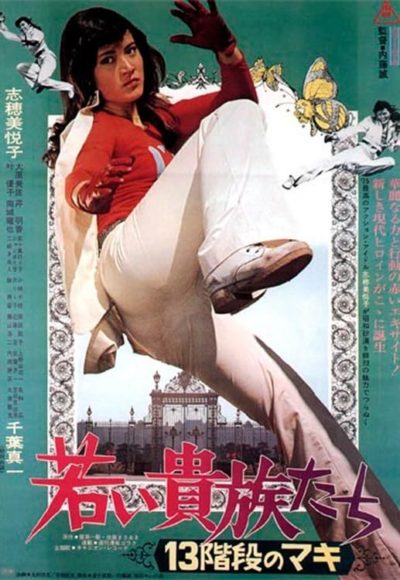 Made by Toei, this is very much a straightforward “pinky violence” film in concept, telling the story of the Wildcats and, in particular, their leader Maki Hyuga. What separates this – in ways both good and bad – from the pack is that Maki is played by Sue Shiomi, best known for her roles in the Sister Streetfighter series of films. That means the action in this is considerably improved on the typical pinky violence movie, with Shiomi capable of holding her own, even when fighting many opponents. In particular, her skills with a pair of nunchaku is a sight to behold. The scenario here provides plenty of opportunities for her to show all her abilities off.
Made by Toei, this is very much a straightforward “pinky violence” film in concept, telling the story of the Wildcats and, in particular, their leader Maki Hyuga. What separates this – in ways both good and bad – from the pack is that Maki is played by Sue Shiomi, best known for her roles in the Sister Streetfighter series of films. That means the action in this is considerably improved on the typical pinky violence movie, with Shiomi capable of holding her own, even when fighting many opponents. In particular, her skills with a pair of nunchaku is a sight to behold. The scenario here provides plenty of opportunities for her to show all her abilities off.
However, the downside is that Shiomi is simply too “good” to play a bad girl. When you put her beside the titans of the genre, like Meiko Kaji or Reiko Ike, Shiomi just does not have the necessary edge to succeed as the leader of an all-female gang of delinquents. Any group led by Shiomi would, I feel, be more likely to sell you cookies or help old ladies across the road, than beat you up and take your lunch money. It’s notable that, while this is certainly not short on the nudity required in the field, Shiomi remains firmly attached to her clothes. Others take care of this onerous duty, with the heroine instead providing the second half of the sex ‘n’ violence recipe.
The story sees Maki running foul of Yakuza chief Ryunosuke Daimon (Nawa) after rescuing a girl from his white slavery operation, and also annoying rich bitch Takako Ebihara (Ohara). Their revenge ends in Maki being framed and sent to prison, while the rest of her gang get hooked on smack by Daimon, and turned into compliant slaves. However, she gets help from an unexpected quarter, in the form of Daimon’s top bodyguard Tetsuya Eto (Nanjô), an honourable ex-boxer who grows increasingly unhappy with his boss’s sleazy business practices. Takako is also unimpressed when she discovers she’s going to be married off to Daimon, whether she wants to be or not. That comes after he has blown up Takako’s father with a car-bomb.
Things unfold as you’d expect. Maki wins the respect of her cell-mates, breaks out and, with Tetsuya are her back, storms the headquarters of Daimon’s yakuza clan, just as he is in the process of getting married to Takako. She’s not there to bring the gang boss a toaster or some nice crockery. If almost entirely predictable, the presence of Shiomi, and resulting upgrade in the quality of the fight sequences does make it feel relatively fresh in style – just not in content. The main factor which stops it reaching the top tier for the genre is the sense Shiomi is almost cos-playing as a bad girl, something you never doubted with the Queens of Pinky Violence. There’s good reason she only dabbled in this field.
Dir: Makoto Naitô
Star:Etsuko Shihomi, Misa Ohara, Tatsuya Nanjô, Hiroshi Nawa





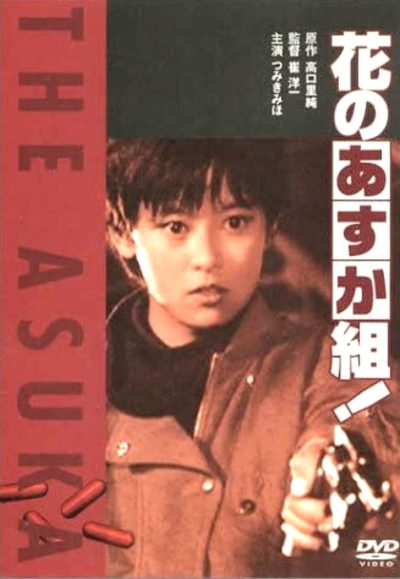 This is based on a 34-volume manga series by Satosumi Takaguchi, which began publication in 1985. It is far from the only adaptation. There have also been two OVAs, a live-action drama series, a different feature version made in 2009, and even a pair of drama CDs. This feature, however, is the only one available in the West to date with subtitles. It takes place at an indeterminate point in the future – the year is given as 199X – when “the streets are overflowing with drugs and violence”. There’s a battle for control, which conveniently seems to be along gender lines. The unfortunately naned male “Red Nose Gods”, under boss Toki Masamune, are going up against the all-girl Hibari Group. They are named after their leader (Mikari), who speaks only through her lieutenant, or with the aid of an artificial voice-box.
This is based on a 34-volume manga series by Satosumi Takaguchi, which began publication in 1985. It is far from the only adaptation. There have also been two OVAs, a live-action drama series, a different feature version made in 2009, and even a pair of drama CDs. This feature, however, is the only one available in the West to date with subtitles. It takes place at an indeterminate point in the future – the year is given as 199X – when “the streets are overflowing with drugs and violence”. There’s a battle for control, which conveniently seems to be along gender lines. The unfortunately naned male “Red Nose Gods”, under boss Toki Masamune, are going up against the all-girl Hibari Group. They are named after their leader (Mikari), who speaks only through her lieutenant, or with the aid of an artificial voice-box.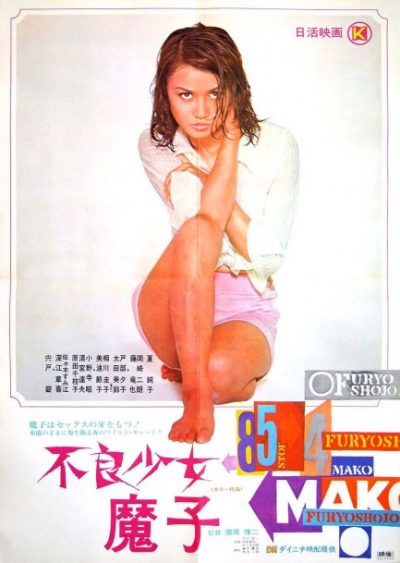 This was among the very last of the “pinky violence” films made by the
This was among the very last of the “pinky violence” films made by the 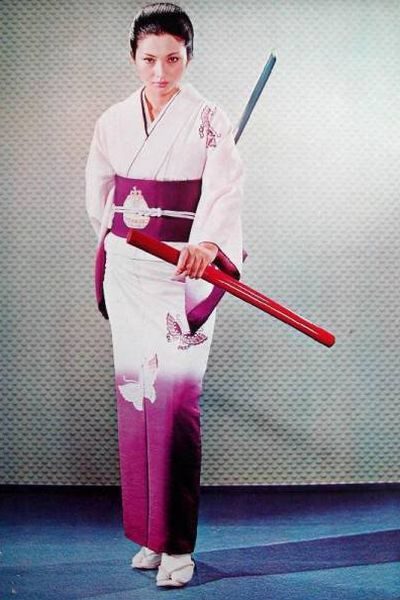
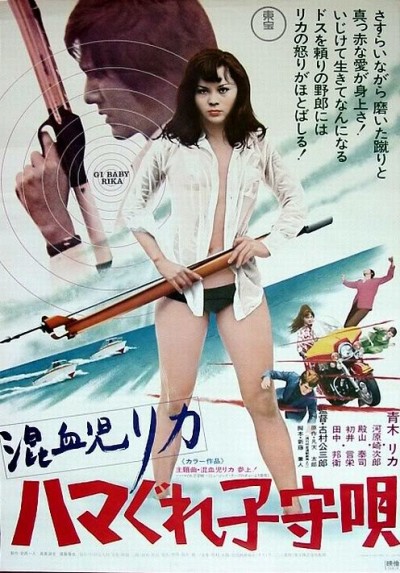
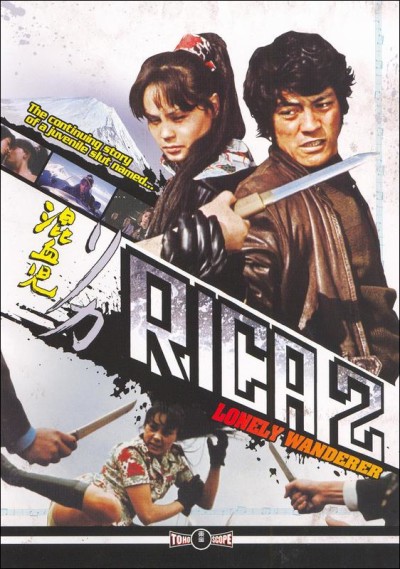
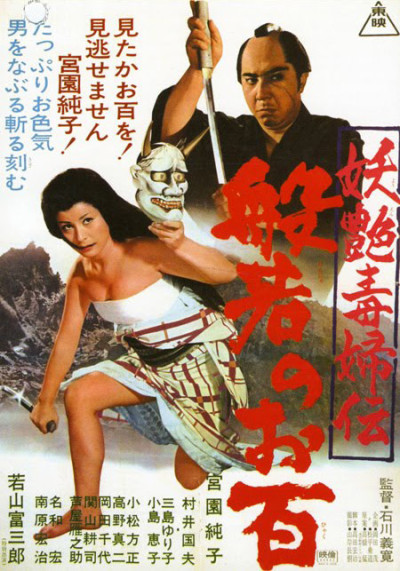
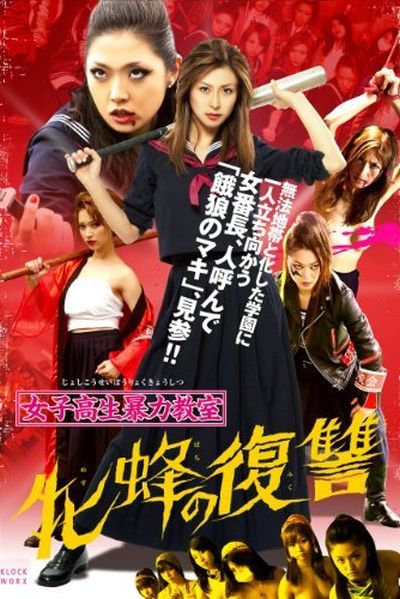
 Following on more or less directly from the events of
Following on more or less directly from the events of 
 Aoki appears to have streaked like a star across the pinky violence firmament, appearing only in the trilogy of which this is the first, and one other film, Gakusei yakuza, before returning to the streets whence she came. Or I like to think that was her origin, anyway, and this is less a dramatic work, than a documentary depicting her life. Sharing the same name, Rika is the child of rape, a GI impregnating her mother before being deployed to Korea, and it’s not long before one of her mother’s boyfriends/customers [the film is sketchy on this detail] has taken a similar approach to Rika. She ends up heading an all-girl gang, but is sent to a reformatory after an opposing, male gang leader accidentally dies during a fight with her. But it’s not long before our heroine escapes, only to find some rivals have taken advantage of her absence, and the rest of the gang has been abducted and are about to be sold off to Vietnam. The boss offers to sell them to her instead, and Rika blackmails her father into paying up, only for the women to be sold anyway.
Aoki appears to have streaked like a star across the pinky violence firmament, appearing only in the trilogy of which this is the first, and one other film, Gakusei yakuza, before returning to the streets whence she came. Or I like to think that was her origin, anyway, and this is less a dramatic work, than a documentary depicting her life. Sharing the same name, Rika is the child of rape, a GI impregnating her mother before being deployed to Korea, and it’s not long before one of her mother’s boyfriends/customers [the film is sketchy on this detail] has taken a similar approach to Rika. She ends up heading an all-girl gang, but is sent to a reformatory after an opposing, male gang leader accidentally dies during a fight with her. But it’s not long before our heroine escapes, only to find some rivals have taken advantage of her absence, and the rest of the gang has been abducted and are about to be sold off to Vietnam. The boss offers to sell them to her instead, and Rika blackmails her father into paying up, only for the women to be sold anyway.